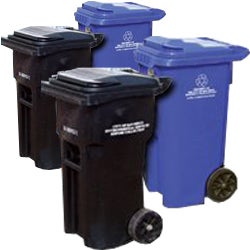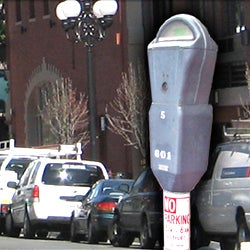About the Airport Management Team
Airport Management Team Description
The Airport Management Team, part of the City's Department of Real Estate and Airport Management (DREAM), is responsible for operating two general aviation airports, Montgomery-Gibbs Executive Airport and Brown Field Municipal Airport, within the City of San Diego. General aviation includes all aviation activities except scheduled airline and military flights, although Brown Field Municipal accommodates a sizeable number of military operations. The two airports support a significant portion of the San Diego region's total annual flight operations, and can accommodate a variety of General Aviation aircraft. Montgomery-Gibbs Executive Airport is the busiest general aviation airport in the San Diego region and Brown Field Municipal Airport has the longest available civilian runway in the region. Aviation lessees include: fixed base operators that provide fuel, aircraft maintenance and aircraft storage facilities, flight schools, San Diego Fire-Rescue Department helicopter operations, San Diego Police Department's Air Support Unit, emergency medical transport operations, and several hundred individual aircraft owners. The majority of the Airports' revenues are derived from non-aviation lessees that include: a hotel, business park, restaurants, Fire Station 43, City Field Engineering Division, San Diego Police Department's Eastern Division, office space tenants and other individual lessees. DREAM - Airport Management Team has the responsibility of maintaining the airports in conformance with Federal Aviation Administration (FAA) regulations and Grant Assurances, as well as, administering over 200 leases.
Airport Management Business Plan
The “Airport Management Business Plan” is intended to ensure that the City’s Airports system continues to be operated safely and efficiently, is in compliance with all appropriate regulations, is financially self-sufficient, encourages airport business growth and opportunities, is customer focused both internally and externally, maximizes the City’s Return on Investment for Airport property, and is managed by professional airport management staff. The goals and objectives of this plan were reviewed using the “SMART” and “GROW” models in order to clarify and refine both. “Action Plans”, articulated in the plan, address the attainment of specific goals/objectives and were developed by answering the “Six W’s”. (See attached for “SMART” & “GROW” models, and the “Six W’s”.) This plan is intended to be a “living and working” document that adapts as conditions change.
The DREAM - Airport Management Team remains committed to making the City of San Diego’s Airports world renowned general aviation transportation portals serving a world-class city.
Mission:
To develop, operate, and maintain Montgomery-Gibbs Executive Airport and Brown Field Municipal Airport as world renowned General Aviation Reliever Airports, providing access to the National Air Transportation System in a safe, efficient, economically self-sufficient, environmentally sensitive, and professional manner.
Vision:
World renowned General Aviation Airports, to serve a world-class city.
Values:
- Integrity
- Do the right thing
- Be ethical, truthful, and fair
- Take responsibility for our actions
- Service
- Exhibit pride in all that we do
- Treat others as we would like to be treated
- Anticipate and promptly respond to requests
- People
- Value customers and employees as partners
- Recognize that an engaged City workforce is the key to quality customer service
- Promote diversity as a strength
- Excellence
- Foster a high performance culture
- Establish clear standards and predictable processes
- Measure results and seek improvement in everything we do
Goals and Objectives
- Ensure City airports are operated safely and efficiently.
- Inspect the airports every day, morning and evening per FAA standards.
- Pass annual CALTRANS Aeronautics inspections.
- Receive acceptable reports from the FAA’s Runway Safety Action Team’s (RSAT) airport evaluation.
- Maintain capability for emergency repairs.
- Ensure City airports comply with all applicable federal, state and local regulations as access portals to the National Air Transportation System.
- Ensure that the Airport Master Plans for both Brown Field Municipal Airport and Montgomery-Gibbs Executive Airport are current and valid.
- Conduct annual hangar and facility inspections.
- Correct discrepancies found during inspections in a timely manner in accordance with the Airports Operations Policy Manual.
- Ensure the City airports are financially self-sufficient, maximize aviation uses and invest in Airports infrastructure.
- Ensure that all available Airports properties are held under appropriate leases or use agreements, with no lease in a “hold-over” status.
- Offer fifteen (15) year leases to the “Tiedown” tenants with hangars upon them.
- Maximize the City’s Return on Investment by ensuring that all leases comply with City policies, are monitored regularly, and are evaluated based on market rate studies.
- Ensure that Airports “Rates and Charges” are evaluated annually to be fair and reasonable, and are adjusted appropriately in accordance with City policy.
- Annually publish an “Airport Management Business Plan” which will be presented to the Airports Advisory Committee and the Smart Growth and Land Use Committee.
- Create a climate in which airport businesses and local businesses are able to thrive and contribute to a resilient and economically prosperous City.
- Ensure that the Airport Master Plans for both Brown Field Municipal Airport and Montgomery-Gibbs Executive Airport are current and valid.
- Publish and keep updated a “Minimum Standards” document that encourages, promotes, and ensures that:
- The delivery of high quality General Aviation products, services, and facilities to Airport users.
- The design and development of quality General Aviation improvements at the Airport.
- General Aviation safety and security.
- The economic health of General Aviation businesses.
- The orderly development of Airport property for General Aviation purposes.
- Publish, use, and update an “Airport Management Property Management Manual” that addresses day-to-day Airport property management functions.
- Be customer focused and responsive to citizen’s concerns, particularly noise and safety concerns.
- Seek and embrace input from the Airports Advisory Committee, community planning groups and the general public.
- Create and distribute an annual DREAM - Airport Mangement Division “Customer Satisfaction Survey”.
- Involve the Airports Advisory Committee, users, citizens, and other interested parties in the operation, utilization and development of the Airports.
- Respond to community noise and safety complaints within two business days.
- Be extraordinary stewards of Airports property, especially environmentally unique and sensitive habitat.
- Ensure that all Airports properties and real property improvements are maintained in the best possible condition and that environmentally sensitive habitat, on the Airports, are maintained and protected in accordance with appropriate standards.
- Ensure that the DREAM - Airport Management Team maintains and monitors environmentally sensitive habitat professionally. The DREAM - Airport Management Team Environmental Biologist will perform all FAA required “wildlife hazard” assessments and prepare any subsequent wildlife management plans.
- Conduct annual inspections of all Airports property.
- Update the inventory of all Airport Lease Agreements and Airport owned real property.
- Identify all aeronautical and non-aeronautical leases.
- Utilize the existing plan to annually:
- Complete regular market rate studies for relevant leases.
- Track and update all leases.
- Review and implement rent adjustments.
- Retain and recruit experienced professionals, well versed in airport management and provide recurrent training to maintain a high level of competency.
- Place emphasis on education and aviation experience in the selection of management level employees.
- Encourage membership in professional organizations, such as the American Association of Airport Executives.
- Encourage Certification and/or Accreditation from the American Association of Airport Executives.
- Encourage attendance at professional conferences and workshops related to the airport industry.
- Recognize employees who demonstrate exceptional performance and knowledge in the airport management field.























